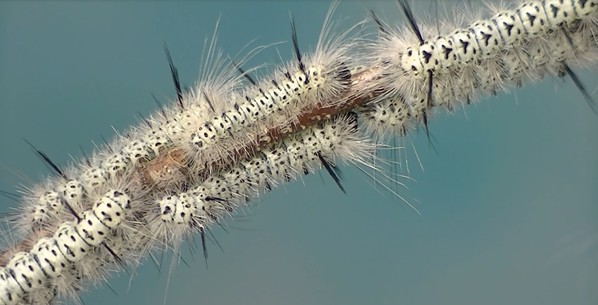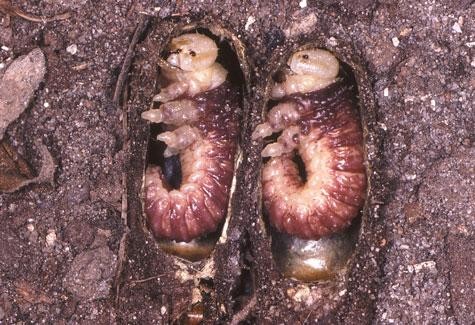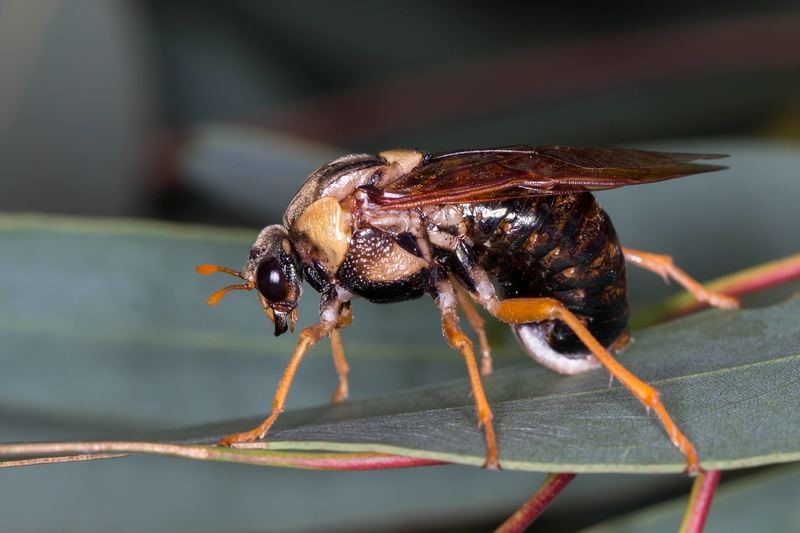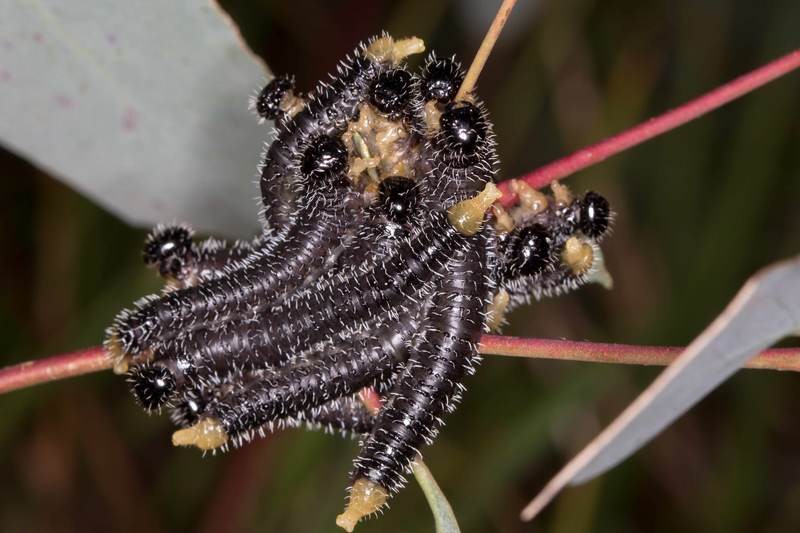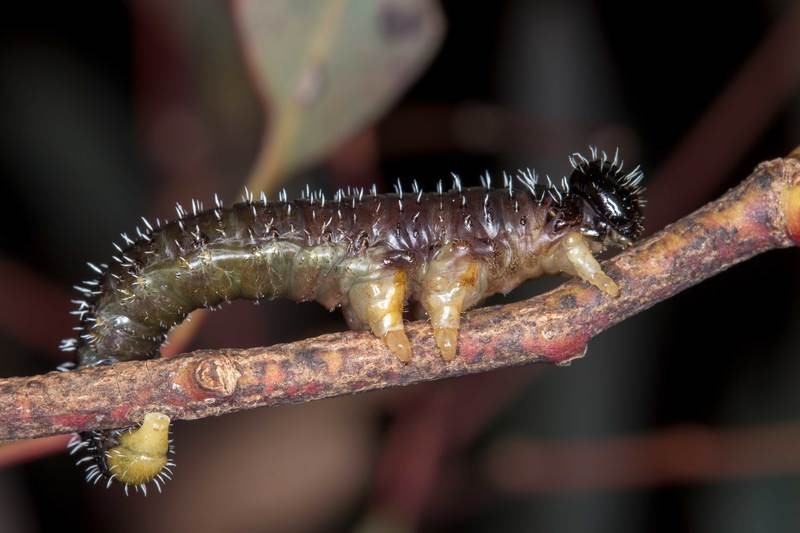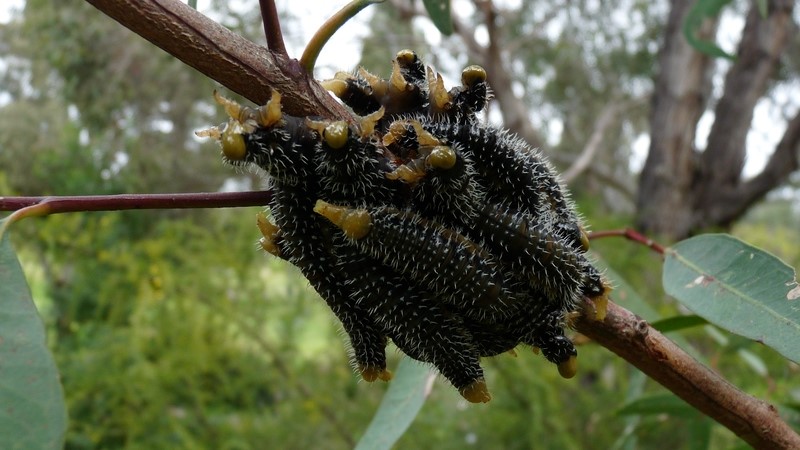Vibrational Communication in Perga affinis (Hymenoptera: Symphyta)
Perga affinis is also known as the Australian spitfire sawfly. The adult female sawfly lays her eggs underneath the surface of leavesl. A single long row of eggs are inserted between the leaf layers, forming a so-called "egg raft". Perga generally hatch from the eggs in the fall, and pass through six larval instars, which lasts three to four months before pupating. All instars are gregarious. The insect is a particularly voaracious consumer of Eucalyptus leaves. When mature, Perga larva leave their host tree and form a cocoon in the soil. Here they remain in a state of diapause for up to four years, before emerging as adults.
Perga larvae generate vibrational signals. Such signals appears to serve to keep the group together and to coordinate collective movement. Two different types of vibrational signals have been observed in Perga: contractive body twitching and tapping. Contractive twitching is characterized by the larva performing a whole-body twitch. The tapping sound is generated when a sawfly larva strikes the tip of its abdomen on a branch or other substrate. Both signal types appear to affect the behavior of colony mates.
Contractive twiching within a group of Perga has been observed to increase in frequency just before the group departs en masse to feed at distant sites and also occurs when the larvae are moving in processions. The behavior may coordinate the movement of the larvae as they move about together.
Tapping by individual larvae increases in frrequency when they become separated from the group and may help them relocate the group. Tapping also occurs most frequently among larvae at the ends of processions, suggesting it serves to stimulate forward movement by the procession. Tapping from behind has also been observed in larval processions of the weevil Phelypera distigma and may serve a similiar function.
Andrew Allen - NatureShare
Andrew Allen - NatureShare
Andrew Allen - NatureShare
